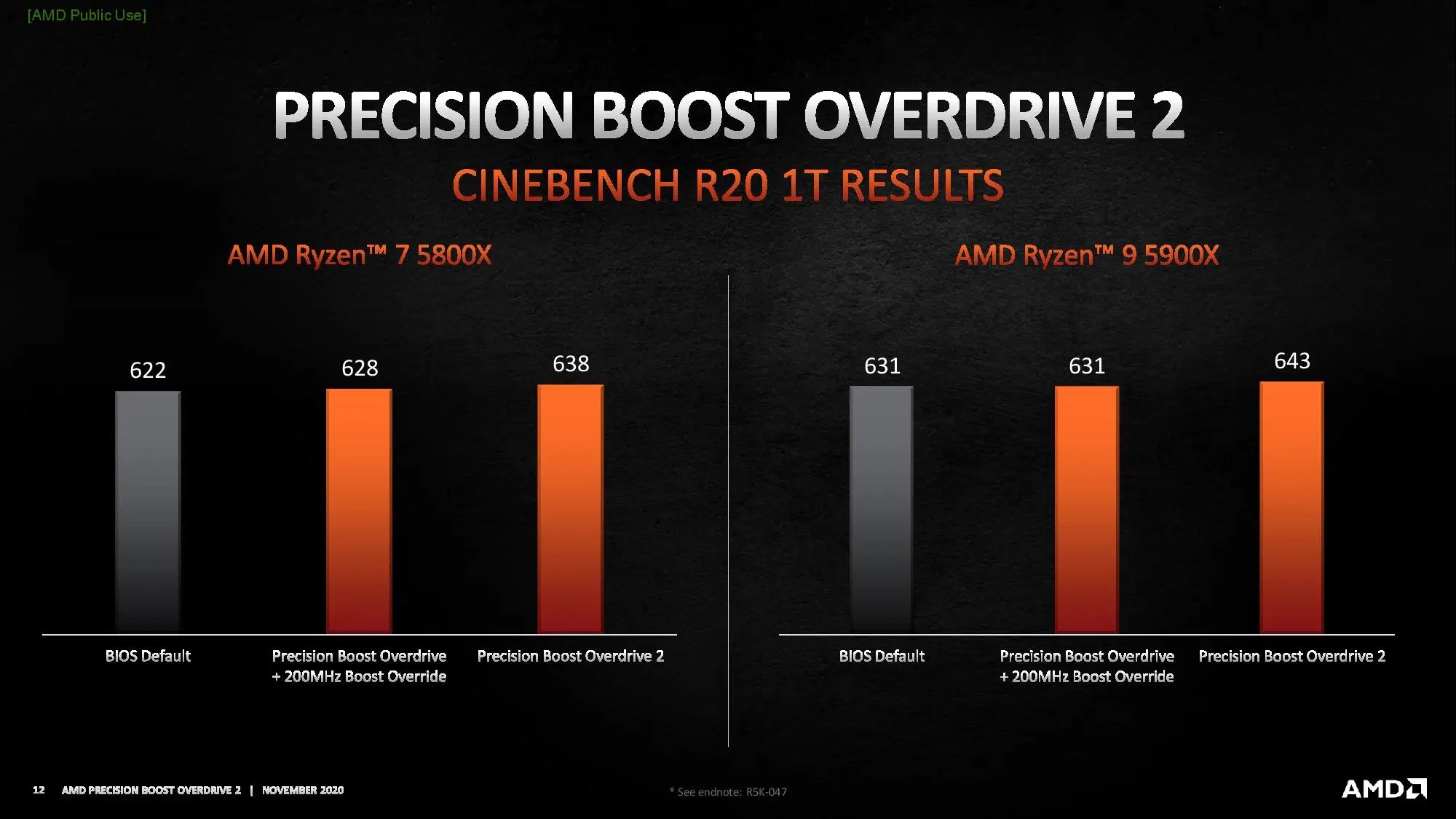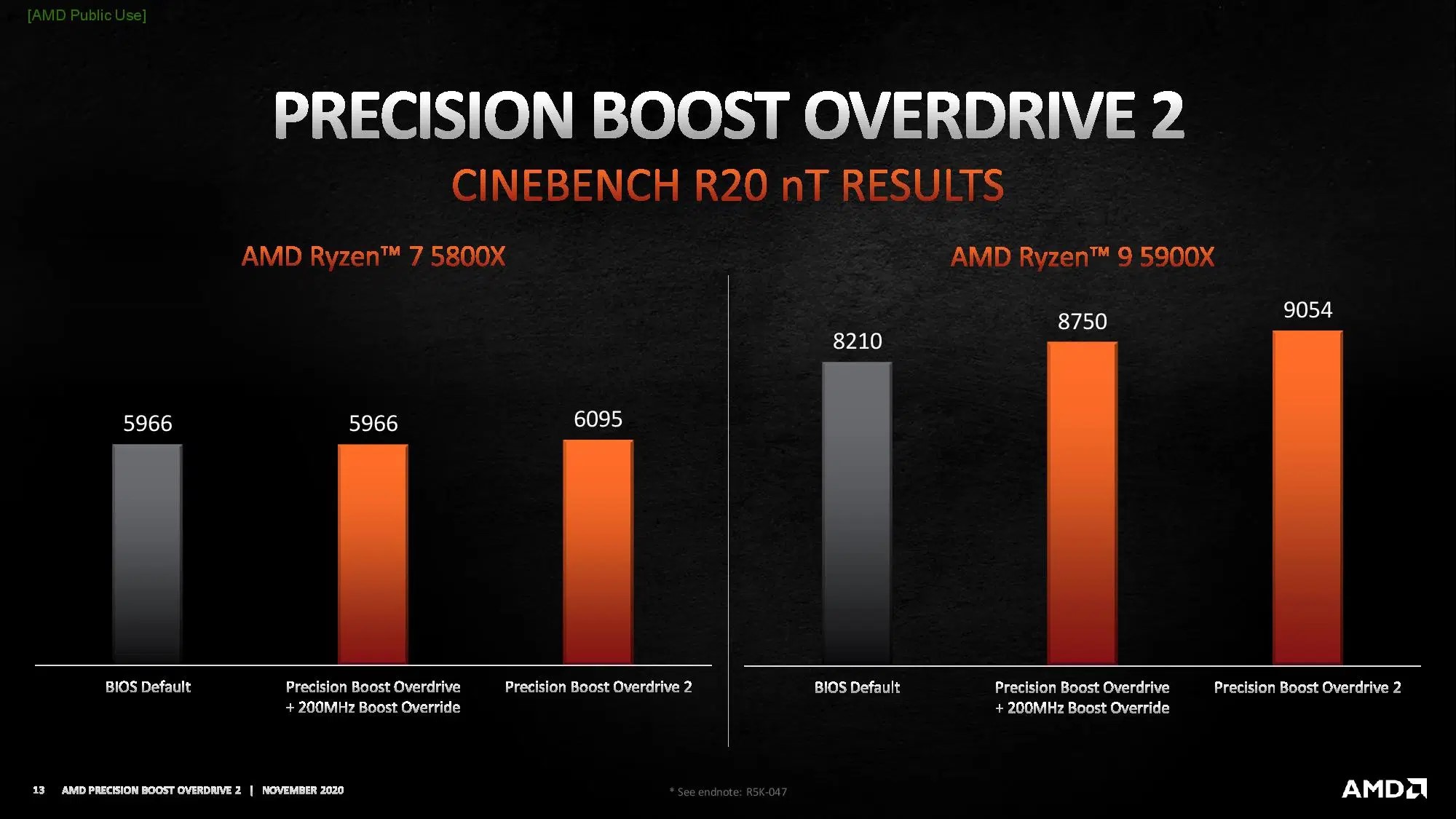
If you have already bought one of AMD‘s Ryzen 5000 series processors, or are planning to buy, then you’re about to get lucky! AMD is getting ready to launch it’s latest version of Precision boost overdrive. They call it PBO2 or Precision Boost Overdrive 2. The Precision Boost Overdrive tool is mostly used for overclocking without the hassle of setting the timings manually. Now with Precision Boost Overdrive 2, undervolting will be possible. Another thing with PBO2 is that single core performance will improve drastically compared to the first PBO.

How PBO2 works and why it will be a must for overclocking lovers!
One of the ways in which PC enthusiasts tinker with their hardware is by overclocking. Overclocking enables you to get more performance from your hardware by modifying the frequencies and voltages of the said hardware until you reach the limit. And after overclocking the frequencies, and setting the desired voltage, it’s then undervolted so as to extract maximum performance while lowering the power usage(also known as thermal headroom). It depends if the silicon can support overclocking as well as undervolting.

PBO works only on Ryzen processors, and with PBO2, overclocking while undervolting and improving single thread performance is exclusive to Ryzen 5000 series processors. With PBO 2, AMD claims that it’s possible to increase single-thread performance without affecting the multi-threaded capacities. In addition to overclocking single core, users will now be able to automatically undervolt their CPUs and optimise the voltage curve to their needs and workloads with “Curve Optimizer”. When voltage and frequency are low, the undervolting potential increases. At a higher voltage and frequency, the undervolting potential decreases.

One special feature about PBO2 is that it gives the Ryzen 7 5800X the same single core performance as the Ryzen 9 5900X. But the down side to this is that using PBO2 will void your warranty. Fortunately, with the relatively risk free gains acquired in PBO2, and the automatic overclocking and undervolting feature, helps avoid excessive amounts of voltage, and would make PBO2 the safest overclocking utility for the Ryzen 5000 series providing the best performance you can get.
AMD’s Curve Optimization tool

AMD’s curve optimization tool will be coming with AGESA 1180 firmware on 400-series and 500-series motherboard BIOS updates. This tool will be designed for just a single user voltage tracking. So, rather than giving the CPU a fixed voltage, it uses sensors embedded in the chip such as workload, temperature and socket limits which increases or decreases the voltage based on the load of the processor. The voltage curve will be done in the order of milliseconds.


Performance improvements with PBO2
Performance numbers from AMD would suggest that this technique, compared to a simple fixed undervolt and core frequency increase, can lead to a 2.5% single thread performance improvement for the Ryzen 7 5800X, and an almost 2% increase in multi threaded workloads. Coming to the 5900X, the single threaded performance has a boost of almost 2%, while multi threaded performance gets an amazing 10% boost. The reason why the 5800X gets a poor boost performance in multi threaded workloads is due to the fact that it uses only a single CCD(Core Chiplet Die). AMD stated that this technique works best with multiple CCDs, and fewer cores per CCD, so the Ryzen 9 5900X, 5950x and above are going to be the best chips for this utility. AMD has also stated that this is going to be applied to all new processors going forward, unfortunately, it will not be back-ported to Ryzen 3000 as it requires some engineering optimizations in Ryzen 5000 that are non-transferrable.
You will only be able to enable the Curve Optimizer in the BIOS for the time being. AMD will add the Ryzen Master software toolkit for Windows sometime in the first quarter of 2021. Currently, just a few motherboards have the feature already present in AGESA 1100 firmware today, however the official rollout will occur with AGESA 1180 firmware updates. This new firmware is set to hit the support pages for each motherboard in early December.





